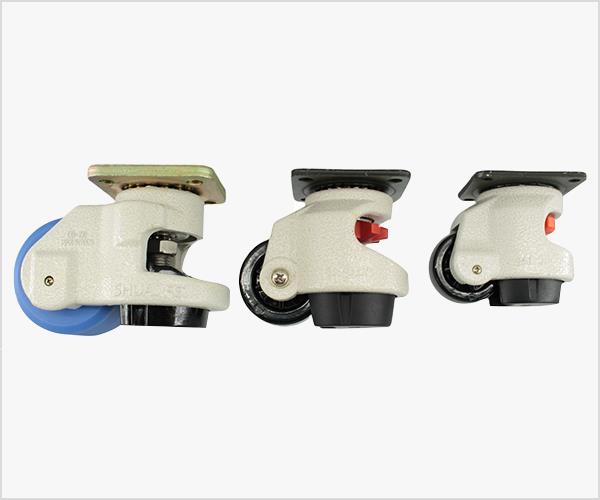When considering the purchase of leveling casters, the actual situation should be considered. Casters seem to be a common accessory, but their use cannot be underestimated. Need to consider whether the production design of the product meets the relevant requirements of the product, including appearance requirements. All parts of qualified casters must not have defects that affect their use. This is also one of the issues buyers need to pay attention to when considering buying casters. Leveling casters are more common, such as polyurethane casters and iron core casters, which are easily oxidized. Therefore, effective measures should be taken to prevent corrosion.
The surface configuration of the leveling casters must be perfect, including the uniformity of the surface color of the parts, which is also one of the important parameters to measure the quality of the product, and various parts can meet the design requirements. For example, the wheels and brackets must be able to rotate flexibly during the inspection process, without jamming, and be firmly assembled. When purchasing casters for level adjustment, the main consideration is the use requirements of the combined equipment and the performance of the braking device. The steering gap between the brackets should be strictly controlled. The main dimensions of casters and wheels should be designed in strict accordance with the parameter design requirements.
The temperature requirements of casters are also an important factor to consider. If the choice of caster materials used in extreme environments is very limited, casters made of ordinary materials cannot play their role. According to market feedback, this horizontally adjustable polyurethane continuous caster can be used in extreme temperature environments.
In addition to the purchase points above, it is also necessary to evaluate the quality of the leveling casters through the caster braking force test, the horizontal static pressure test and the steering braking force test. Generally speaking, casters with a larger bearing range require a thicker caster support thickness.

Related Industry Knowledge
- What are the requirements of heavy casters for its accessories?
- Introduction of thermal and cold deformation of industrial casters
- The importance of silent casters in the medical industry and the application of other industries
- What convenience does polyurethane casters bring to us in our home life?
- Use of outer packaging for industrial universal wheels
- Introduction of galvanized surface treatment of brake casters
- How to solve the rusty wheel of the cart?
- Welding technology in the production technology of shock-absorbing casters
- How to choose the bearing of stainless steel caster correctly?

